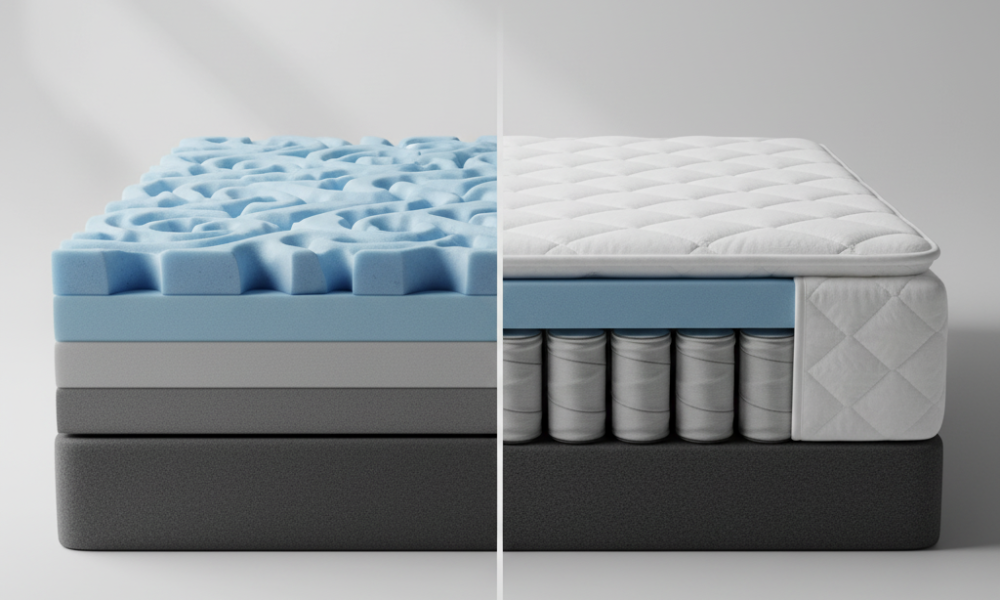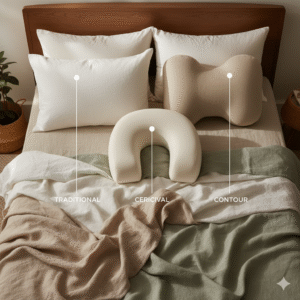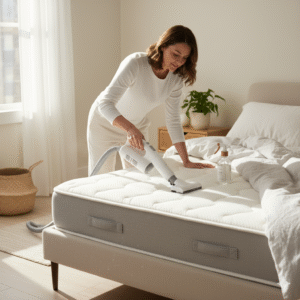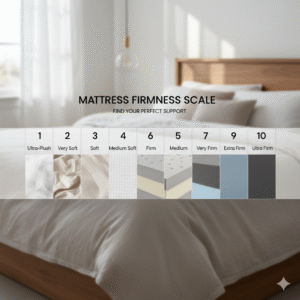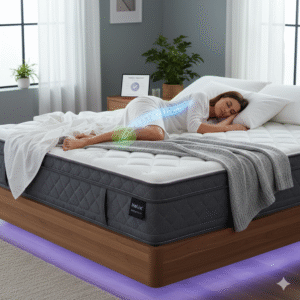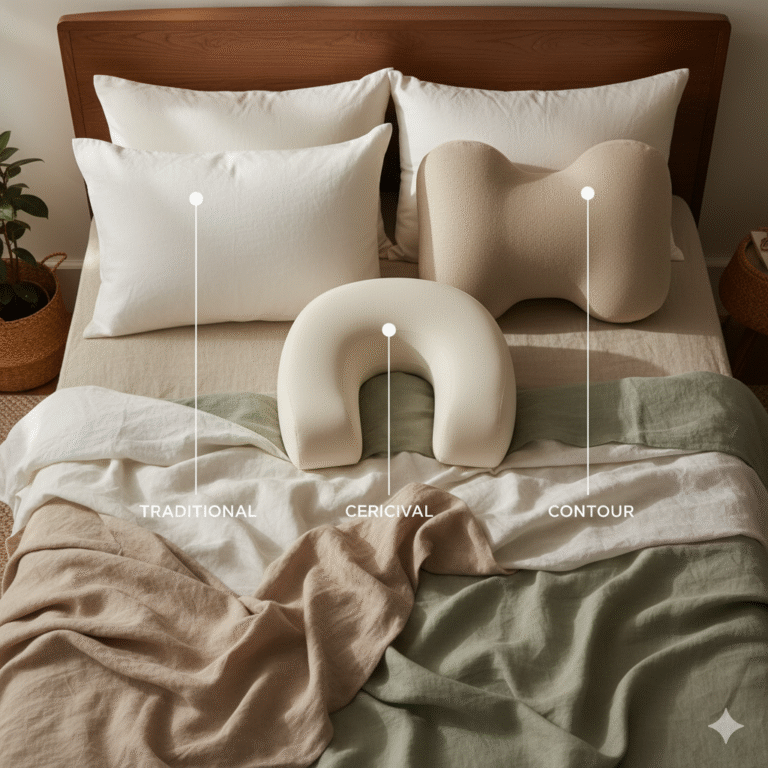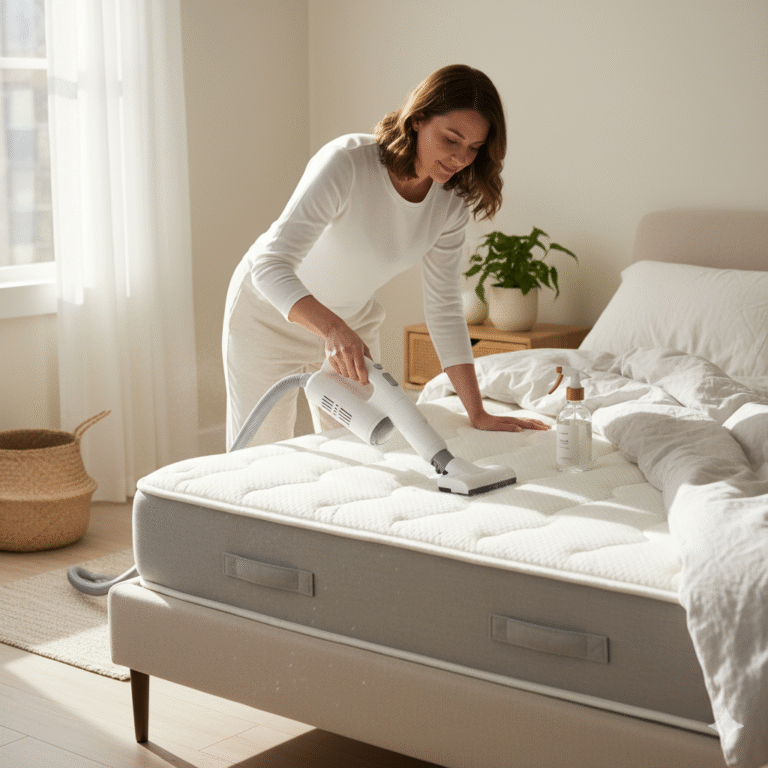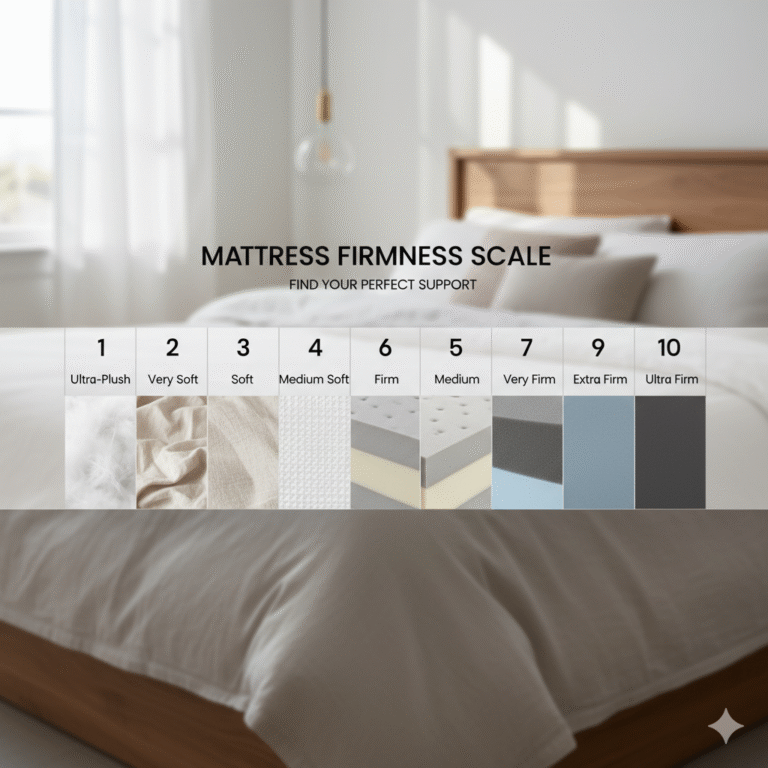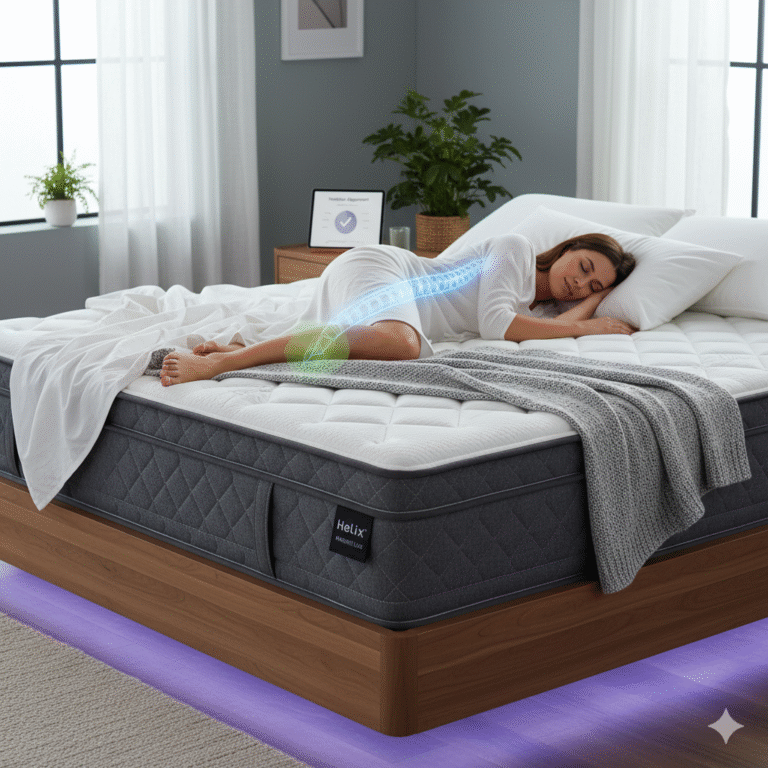Memory Foam vs Hybrid: 7 Key Differences & Buying Tips
If you’re choosing between memory foam vs hybrid, this guide shows how they differ in feel, cooling, durability, and price—plus quick tests and a checklist so first-time buyers can pick with confidence. You’ll also find eco-friendly pointers, certifications, and brand examples to help you shop smarter.
Key Takeaways: memory foam vs hybrid
- Pressure relief vs bounce: Memory foam hugs for deep relief and top-tier motion isolation, while hybrids add coil lift for easier movement and cooler sleep.
- Cooling & airflow: Hybrids usually sleep cooler thanks to ventilated coil cores; foam can run warmer unless engineered for airflow.
- Durability varies by build: Denser foams and quality pocketed coils last longer; check trial and warranty details.
- Fit by sleeper type: Your position, body weight, and heat sensitivity should guide the choice between memory foam vs hybrid.
Definitions: What Are Memory Foam and Hybrid Mattresses?
Memory foam: Viscoelastic foams that soften with heat and pressure to cradle your curves and dampen motion. Typical builds stack a plush comfort foam over a supportive transition foam and a dense base foam.
Hybrid: A pocketed coil core topped with foam or latex comfort layers. The coil unit increases airflow and lift, while foams fine-tune pressure relief and feel.
Side-by-Side Comparison
Feel & Pressure Relief
Answer first: Memory foam contours more deeply; hybrids feel balanced and buoyant. If you want a “hug,” foam wins. If you want lifted, on-top support, choose a hybrid.
| Category | Memory Foam | Hybrid |
|---|---|---|
| Feel & Pressure Relief | Deep contouring “hug,” excellent for shoulders/hips | Balanced cradle with coil lift; easier to move |
| Motion Isolation | Outstanding—ideal for light sleepers and couples | Very good; coils add slight bounce |
| Temperature | Can run warm unless ventilated or gel/open-cell | Generally cooler due to airflow through coils |
| Edge Support | Varies; often softer edges | Usually stronger edges via firmer coils or foam rails |
| Responsiveness | Slower response; combo sleepers may feel “stuck in” | Springier; easier position changes |

Cooling & Airflow
Answer first: Hybrids typically sleep cooler because coils move air under the body. Foam models can offset heat with perforations, open-cell designs, or cooling infusions.
Learn more about how cores affect heat and airflow in this overview from the Sleep Foundation. Memory Foam vs. Hybrid (Sleep Foundation)
Motion Isolation & Partner Disturbance
Answer first: Memory foam leads in motion isolation; hybrids are close behind, especially models with thicker foam comfort layers above the coils.
Durability, Edge Support & Pricing
Durability Signals to Check
Answer first: Denser comfort foams and robust coils resist early sagging. Look for meaningful foam thickness above the springs and materials transparency.
- Foam density: Comfort foams around ~3–4 lb/ft³ generally outlast lower-density alternatives.
- Coil quality: Pocketed coils with zoning and tempered steel improve support and longevity.
- Construction balance: Enough foam above coils to prevent pressure points and “bottoming out.”
Edge Support
Answer first: Hybrids usually win on the perimeter because of firmer edge coils or foam encasement—useful if you sit on the edge or need every inch of sleeping space.
Pricing & Value
Answer first: Memory foam often starts cheaper; hybrids cost more for the coil system and edge reinforcement. Compare full value—trial, warranty, and verified materials—not just upfront price.

Who Should Choose Memory Foam vs Hybrid
Choose Memory Foam If…
Answer first: You want maximum pressure relief and near-silent motion control. Foam is especially friendly to light sleepers and those sensitive to partner movement.
- You prefer a slow-melting contour that fills the low back/waist gaps.
- You’re a side sleeper or have sharp shoulder/hip pressure points.
- You like a quieter bed with minimal bounce.
Choose a Hybrid If…
Answer first: You tend to heat up, change positions frequently, or need stronger edges. Coils deliver airflow and lift without ditching plush comfort layers.
- You’re a combination sleeper or heavier body type who needs easy movement and support.
- You value cooler nights with better ventilation under your body.
- You sit on the bed edge or share a smaller size and want perimeter strength.
Dig deeper into related comparisons and fundamentals:
- Hybrid Mattress Benefits: Why You Should Consider Coils + Foam
- Memory Foam Mattress vs Spring: Brutally Honest Comparison
- The Science Behind Mattress Firmness and Sleep Quality
- Mattress Buying Mistakes to Avoid

How Firmness & Base Impact Overall Feel
Firmness vs Support
Answer first: Firmness is the first impression; support is the long-term comfort. Lighter bodies often prefer medium to medium-soft foams; average to heavier bodies may need medium-firm hybrids with thicker comfort layers to prevent bottoming out.
Your Foundation Matters
Answer first: A solid platform or correctly spaced slats maintains alignment and protects warranties. If you’re weighing bases, this primer from BHG is helpful: Box Spring vs Platform (BHG).
Keeping any mattress fresh extends its lifespan—follow our guide on how to clean a mattress for safe stain removal and deodorizing without harming foams or fabrics.
Decision Checklist & Buying Tips
Quick Self-Assessment
Answer first: Start with your primary goal—deep relief (foam) or cooler bounce with lift (hybrid)—then confirm fit by position, body type, and heat sensitivity.
- Primary goal: pure pressure relief (memory foam) or cooler bounce with lift (hybrid)?
- Body type & position: side sleepers/light bodies may prefer cushier foams; combo/heavier sleepers often do better on supportive hybrids.
- Materials that last: denser foams, quality pocketed coils, and verified zoning where needed.
- Trial & warranty: use the full trial; look for 10+ years on the core.
- Pillow & base: match pillow loft to position and ensure your foundation meets specs.

Eco-Friendly Considerations: Sustainability in Memory Foam vs Hybrid
Materials & Certifications
Answer first: If you shop eco-consciously, check for material transparency and third-party certifications, then weigh durability against end-of-life impact.
- Foam chemistry: Look for low-emission foams and clear density specs. Ventilated or open-cell designs can improve breathability.
- Textiles: Organic cotton and wool can replace synthetics in covers and quilting; wool can also aid temperature regulation.
- Coils: Steel is recyclable; hybrids may be easier to disassemble than glued multi-foam stacks.
Parachute’s hybrid approach highlights airflow and resilient coil support, with an emphasis on natural textiles in some designs. Review their primer to understand hybrid construction choices: What Is a Hybrid Mattress? (Parachute Home).
Environmental Impact & Longevity
Answer first: The most sustainable mattress is one you keep longer. Prioritize builds that resist body impressions and give you repair/rotation options.
- Choose the feel you’ll comfortably use for years (not just on sale weekends).
- Use a breathable protector and rotate as recommended to extend life.
- Plan for responsible disposal—many municipalities or retailers offer pickup/recycling programs.
For a plain-language refresher on foam’s benefits and trade-offs—including heat management—see BHG’s explainer: What Is Memory Foam? (BHG).
Fit by Sleeper Type
Side Sleepers
Answer first: Side sleepers with sharp pressure points may prefer plusher foams; some hybrids add zoned coils to keep shoulders comfy and hips aligned.
See our side-sleeping guide with pressure-relief tips: Choosing the Best Type of Bed for Side Sleepers.
Back Pain & Alignment
Answer first: Balanced support is key—thicker comfort layers for cushioning, plus a supportive core that won’t collapse under the lumbar region.
Compare strategies in The Best Bed Types for Back Pain Relief.
FAQ
- Is memory foam or a hybrid better for couples?
- For motion isolation, memory foam is hard to beat; for cooling, bounce, and edge support, hybrids usually win. Many couples prioritize a hybrid’s airflow and perimeter strength.
- Which lasts longer: memory foam vs hybrid?
- Both can be durable when built well. Look for denser comfort foams and sturdy pocketed coils. Cheaper foams or low coil counts are more likely to sag early.
- Do hybrids sleep cooler than memory foam?
- Usually yes. The coil core promotes ventilation. If you love the foam feel but sleep hot, choose ventilated/open-cell foams and breathable covers.
- What firmness should I choose?
- Lighter side sleepers often like medium to medium-soft. Average or heavier bodies and back/stomach sleepers usually prefer medium-firm with robust support.
Final Thoughts
Choosing between memory foam vs hybrid comes down to the feel you enjoy every night and the temperature control you need. If you’re still unsure, start with your primary goal (deep relief or cooler bounce), then use our checklist and pillar guides to confirm alignment and durability. For more help, explore our comparison articles here on Cozy Bed Quarters—they’re designed to shorten your path to the right mattress.
Related Reading
Hybrid Mattress Benefits: Why You Should Consider Coils + Foam
Memory Foam Mattress vs Spring: Brutally Honest Comparison
The Science Behind Mattress Firmness and Sleep Quality
Sleep Foundation: Memory Foam vs Hybrid
Parachute Home: What Is a Hybrid Mattress?
Better Homes & Gardens: What Is Memory Foam?

